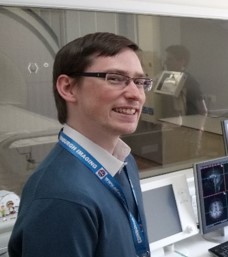Small vessel diseases in a mechanistic perspective: Targets for Intervention in Stroke and Dementia (SVDs@target)
An international consortium of mostly European investigators launched a major collaborative research program to uncover mechanisms and pathways in different forms of small vessel disease.
Stroke and dementia rank among the most pressing health issues in Europe. Cerebral small vessel diseases (SVDs) have emerged as a central link between these two major co-morbidities. SVDs account for more than 30% of strokes and at least 40% of dementia cases. They encounter multiple distinct diseases that can be separated based on their underlying genetic defects, risk factors, and clinical presentations. Despite this profound impact on human health, there are no treatments with proven efficacy against SVDs.

The network “Small vessel diseases in a mechanistic perspective: Targets for Intervention in Stroke and Dementia(SVDs@target)” is funded through the European Union’s Horizon 2020 research and innovation programme and brings together top scientists with a wide range of complementary expertise.
The project also includes three studies:
ZOOM@SVDs, aims to advance our knowledge of why small vessel disease develops by using one of the strongest MRI scanners currently available. Flyer: available in German and in English
INVESTIGATE-SVDs, aim to use newly developed advanced MRI brain scans to measure how well the small blood vessels are working to prevent leakage of damaging inflammatory cells into the brain tissue and ensure enough blood gets to the brain when it is needed. Flyer: available in English, German and Dutch
TREAT-SVDs, high blood pressure is one of the most important risk factors for developing small vessel disease but currently it is not clear which blood pressure lowering drugs are best at improving small blood vessel function. We propose that the function of the small microvessels in the brain can be influenced by medication. Flyer: available in English, German and Dutch
SVDs@target is a project consisting of preclinical work and clinical studies. With the three clinical studies involved in this project, we aim to increase our knowledge on small vessel diseases. The study designs were presented for the first time at the ESOC 2017 during the poster presentation.
Common features of all three clinical studies
We aim to include patients with sporadic small vessels disease clinically presenting with a lacunar stroke or vascular cognitive impairment. In addition, we will include CADASIL patients suffering from a genetic form of small vessel disease. In all our clinical studies, we will measure the function of the small blood vessels in the brain with a so called hypercapnic challenge. Participants will inhale medical grade air and a CO2-air-mixture. CO2 is a physiological stimulus for blood vessels to dilate. This will be measured using the BOLD MRI sequence.
For more information on the trial: https://www.svds-at-target.eu/
SVDs@target has received funding from the European Union’s Horizon 2020 research and innovation programme under grant agreement No 666881.
Meet SVDs@Target Investigators

Michael Stringer
Research Fellow in Magnetic Resonance Imaging and Image Analysis.
Centre for Clinical Brain Sciences, University of Edinburgh
Edinburgh Imaging and the UK Dementia Research Institute at the University of Edinburgh.
Why does this trial (Zoom/INVESTIGATE or TREAT) on small vessel diseases matter?
Investigate-SVDs recruits small vessel disease (SVD) patients to have advanced magnetic resonance imaging scans. SVD remains poorly understood, this study has great potential to further knowledge & ultimately improve outcomes for patients.
What is it that you do in this project?
As a research fellow in medical physics at the University of Edinburgh I helped setup the magnetic resonance imaging protocol (guide to running the scans), liase with other sites and am heavily involved with analysis of the imaging data.
Why do you do it?
My research focuses on applying advanced imaging and mathematical methods to study disease. I enjoy applying these tools to study real world problems, and as a highly multidisciplinary area it provides a lot of variety – it is seldom dull.
 Hilde van den Brink
Hilde van den Brink
PhD student
Department of Neurology, UMC Utrecht Brain Center, University Medical Center Utrecht
Why does this trial on small vessel diseases matter?
Amazing technical developments make it possible that we can now, for the first time in humans, study the small vessels themselves in Zoom@SVDs. I believe this is crucial in understanding small vessel disease and dementia.
What is it that you do in this project?
I am involved in most aspects of the trial, from patient recruitment, to patient visits, data analyses and all the behind the scenes (paper)work that is necessary to run a trial like this. However, of course good teamwork is key!
Why do you do it?
Because I truly believe that we first need to understand small vessel disease before we will better understand dementia. In the long run, I hope my work sparks ideas on possible treatments for this devastating disease.
 Sébastien Foulquier
Sébastien Foulquier
Senior Post-doctoral researcher
Pharmacology – Toxicology Dept, Maastricht University
CARIM – Cardiovascular Research Institute Maastricht
MH&NS – School for Mental Health and Neuroscience
Why does the research on small vessel diseases matter?
There is no way to prevent and treat this disease, while its prevalence is increasing with the population ageing. It is thus urgent to identify it early and to understand its mechanisms to delay/prevent its deleterious impact.
What is it that you do in this project?
We are studying the contribution of brain immune cells for the development of small vessel diseases in animals. We look at those cells and their interplay with brain small vessels and their impact on the cognitive function of the animals.
Why do you do it?
I strongly believe that immune cells can become dysfunctional when exposed to many cardiovascular risk factors and can contribute to the functional and structural remodeling of small vessels walls.
 Tine Arts
Tine Arts
PhD student
UMC Utrecht, Radiology department
Why does this trial (Zoom/INVESTIGATE or TREAT) on small vessel diseases matter?
It helps us understand the mechanisms driving small vessel diseases and related brain damage, which can lead to better treatment. The beauty is that these trials focus on various disease aspects, and complement each other knowledge-wise.
What is it that you do in this project?
I help collect the 7T data of the ZOOM trial and the 3T data of the TREAT trial. For the ZOOM trial, I analyse the data to obtain knowledge about the hemodynamics of the small cerebral vessels.
Why do you do it?
Small vessel disease is a major cause of stroke and dementia and so far no treatment has been found and it impacts the daily lives of many people worldwide. It is time we gain more understanding of this common disease.
 Humberto Mestre MD, MSC
Humberto Mestre MD, MSC
PhD student
Needergaard’s lab
University of Rochester Medical Center
Why does this research on small vessel diseases matter?
There is no cure for dementia. But half of patients have damage to the small blood vessels in their brain. Although there are no cures for dementia yet, it might be possible to prevent it in some patients by treating small vessel diseases.
What is it that you do in this project?
Blood vessels protect the brain from toxic compounds in the blood, but they also aid in the removal of waste produced by brain cells. We investigate how small vessel diseases impair these abilities and how this might contribute to dementia.
Why do you do it?
Dementia is a public health crisis. Incidence is expected to triple by 2050, and with the recent failure of several clinical trials, we need all hands on deck to solve this issue. Initiatives like this are vital in order to achieve this.
 Laurien Onkenhout
Laurien Onkenhout
PhD candidate
UMC Utrecht
Why does this trial (Zoom/INVESTIGATE or TREAT) on small vessel diseases matter?
Small vessel disease is common in the older population. It is also an important factor in vascular dementia. Studying the underlying mechanisms in the small vessels is key in tackling small vessel disease. I believe that TREAT@SVDs contributes to understanding the small vessels and their workings.
What is it that you do in this project?
I am one of the PhD’s on this project and together with our team I am involved in most aspects of the trial, from patient recruitment, to patient visits, data analyses and all the behind the scenes (paper)work that is necessary to run a trial like this.
Why do you do it?
I do this because it is my belief that, given the opportunity, one should always try to give back to the community. In this case by conducting research and via this way doing my small part in solving the large puzzle that might one day lead to the ability to solve (vascular) dementia. Understanding the disease is key.
 Tushar Deshpande, PhD
Tushar Deshpande, PhD
Postdoc
Sorokin lab
Institute of Physiological Chemistry and Pathobiochemistry,
University of Muenster
Why does this research on small vessel diseases matter?
SVDs are inadequately recognized socioeconomic burdens. With the increasing life expectancy they will be one of the major future challenges. Unfortunately, not a single medicine has specifically been developed to target SVD and our current understanding of the disease is largely insufficient for identifying new therapeutic targets.
What is it that you do in this project?
I am investigating role of inflammation in the progression of SVDs. I am examining not only the mouse models of SVDs but also post mortem brain specimens of SVD patients for markers of inflammation and their correlation with the brain damage.
Why do you do it?
My fascination for neurological disorders and background training in neuropharmacology has propelled me to work on SVDs@target project. I believe that my research will help to better understand this disorder and pave a way for novel therapeutic strategies.
INVOLVING STROKE SURVIVORS IN CLINICAL TRIALS
The pandemic has had a negative impact on running clinical research trials.
Stroke Alliance for Europe wanted to find out from patients why they had agreed to participate in the clinical trial and why it was important to them.
Interview with a patient in her 70s, who participated in the SVDS trial, Scotland
SAFE: Why did you think it was important to take part in the Treat SVDs@Target clinical trial?
PATIENT: I thought it would be beneficial for me as it meant that my blood pressure was being monitored twice a day for the duration of the trial.
SAFE: Did you have any fears or reservations before making the decision?
PATIENT: No, I had no concerns at all.
SAFE: Do you think participation has benefited you?
PATIENT: Yes, it made me feel more confident, knowing that my blood pressure was being checked every day.
SAFE: What are your hopes after taking part?
PATIENT: I’ve felt more comfortable since taking part.
SAFE: What would you say to someone who is considering participating in a trial?
PATIENT: Go for it. It’s a wonderful idea. It made me feel at ease knowing that people were looking at my blood pressure every day during the trial.
SAFE: If you were asked to take part in a trial now, would the pandemic influence your decision?
PATIENT: It didn’t really affect me as it was all done from home. I’d take my blood pressure reading myself and it was monitored remotely so I didn’t have to worry about coming in to contact with anyone during the trial.
Interview with Stuart, 52-year-old man, who participated in the SVDS trial in the UK
Stuart is a fit and healthy active person who had a minor stroke last August (2020)
‘I started to feel unwell and had a tingly sensation in my arm on the Friday. I was still feeling unwell by Monday so I rang the NHS and after a hospital visit and scan, I was told I had had a minor stroke probably related to the fact that I was overweight causing high blood pressure. I couldn’t drive for a month and I had 5 weeks off work.
I was asked if I wanted to participate in a clinical trial and after speaking to my family I decided to sign up. I had no concerns about being exposed to COVID-19. The study took place in a separate building from the hospital and involved having an MRI scan and review check-up.
My main concern was having time of work. I made the decision to participate in the trial because I thought it would be both beneficial to me and hopefully help future treatment for others affected by stroke.
Being part of the trial meant that I was being monitored for 4-5 months. Having regular check-ups and MRI scans meant that I felt reassured that if there were any further problems with my health, they would be picked up quickly. It gave me reassurance.
I am determined to make sure I do all I can to prevent another stroke. I’ve lost 2 stone already and hoping to shift another this year. Everything seems to be fine. The stroke has changed my life – I’m now fitter, healthier and lighter than before and on blood pressure tablets. Participating in the trial was nothing but a positive experience for me and I would recommend anyone approached to participate to do so.’
Interview with Tony who had a stroke in June 2020 and participated in the SVDS trial in England
‘I checked out the research on their website and any questions or concerns were answered by one of the principal researchers. She was fantastic and explained everything step by step so I had no worries going in to the trial.
‘It involved going the university unit at the hospital and having four MRI scans over four months. My blood pressure was also taken and I was put on different blood pressure medication during the trial. The last tablets worked out the best for me and I’m still taking them now.
‘I was having problems with my left eye and the MRI scan picked up the lesion in the part of the brain that affected my sight.
‘I didn’t see anyone from the stroke unit during COVID-19 – only my physio every two weeks. I didn’t have any concerns going to the site for the trial to have the MRI scans. I felt completely safe as it was separate from the main hospital so I didn’t feel worried about being exposed to the virus.
‘I was looked after extremely well by the research team during the trial. They were all fantastic including the radiographers. I feel lucky to have had the opportunity to participate in SVDS. I’m now on the right blood pressure medication thanks to the trial.
‘I would highly recommend participation in a clinical trial. If you’re unsure, do your research and ask questions about any concerns you may have before you decide. If asked again, I would have no hesitation in considering participating in a future trial.’




